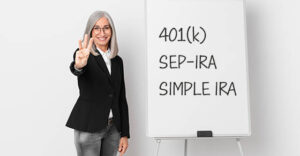The federal government in recent days released further guidance on the Paycheck Protection Program (PPP) many of which are good news for smaller businesses who received PPP loans of $50,000 or less. We remain hopeful that will be expanded to $150,000. The new guidance covers:
Forgiveness of PPP loans of $50,000 or less: One long-awaited question relative to PPP loan forgiveness concerns the effects of reductions in a business’s full-time equivalent (FTE) employees or their wages/salaries. The new guidance specifies that borrowers who received $50,000 or less in PPP loan proceeds may use a new forgiveness application (SBA Form 3508S) and be exempt from any reduction in the portion of their PPP loan that will be forgiven regardless of changes in FTE or employee salaries or wages.
Simplified PPP loan forgiveness applications for smaller loans: Those businesses who secured PPP loans of $50,000 or less who have enough qualified expenditures are no longer required to provide the extensive salary/wage and FTE computations previously required. Instead, the lending institution who handled the business’s PPP loan is now only required to confirm that the business provided documentation of the salary/wage and other qualified expenses.
Qualified Expenditures Exceeding a PPP Loan Amount: As mentioned in previous PPP Client Alerts, the government’s forgiveness guidance apparently allows a borrower to incur eligible expenditures in excess of the borrower’s PPP loan. We believe this is the case with most businesses using the 24-week period. The government affirmed this possibility this summer in a new interim final rule, which stated that “… in some cases, a borrower may submit to a lender documentation of eligible payroll and non-payroll costs that exceed the amount of the borrower’s PPP loan.” This guidance establishes a basis which borrowers previously thought to be subject to forgiveness reductions due to FTE or salary cuts may still be granted full forgiveness of their PPP loans because their eligible expenditures exceed their loan. As an example, in the case of a borrower securing a $150,000 PPP loan and then pays $200,000 of eligible expenditures during its covered period, the borrower could still be granted full forgiveness of the loan even if the borrower’s forgiveness is reduced by $50,000 because of FTE or salary reductions. We believe it is likely for businesses with FTE reductions to still qualify for 100% loan forgiveness. It’s important to understand though, that a borrower is not permitted to generate a forgiveness amount in excess of any outstanding PPP principal plus accrued interest.
As far as documentation of eligible expenditures in excess of a borrower’s PPP loan amount is concerned, the government guidance is clear stating the lender need only “confirm receipt of the documentation the borrower is required to submit to aid in verifying payroll and non-payroll costs” and “confirm the borrower’s calculations on the borrower’s Loan Forgiveness Application, up to the amount required to reach the requested Forgiveness Amount.”
Deferral period extended: Though previous legislation extended the deferral period for PPP borrower payments to ten months from the original six months, lending institutions notified borrowers about payments before the ten-month period. Lenders are now required to notify borrowers of the automatic extension. In addition, the borrowers can ignore the former expiration date of October 31, 2020 as a revised form will be issued shortly
Lenders reportedly have begun accepting forgiveness applications. Additional legislation and guidance is expected in coming weeks.
Under present guidance, the use of PPP funds to pay qualified expenses makes those expenses not deductible. We remain hopeful that Congress will ultimately allow these expenses to be deductible. If the law remains unchanged, the timing of the loss of these deductions remains an unanswered question. No guidance has been issued by the IRS if the loan forgiveness occurs in a different taxable year than the eligible loan expenses. IRS will have to issue guidance if these expenses remain not deductible. It is also possible that states may not follow the federal tax legislation on PPP funds.
Additional Updates
The firm participates in all the American Institute of Certified Public Accountants Town Hall webinars. Among the highlights of the most recent webinar are:
- The AICPA still believes PPP loan forgiveness will become tax-free.
- Congress will almost certainly pass a new COVID-19 relief package. The questions are whether the package will be passed prior to the November 3rd election and the final size and scope of the package.
- The new package will include stringent eligibility requirements, likely revenue based.
- Businesses should be prepared to move quickly once a package is signed into law.
We realize PPP loans have become increasingly complex, and will only become more so. For help completing your PPP loan forgiveness application, when it is best to apply, or if you have any questions regarding the PPP or your business’s eligibility for loan forgiveness, please email or call your Lopata, Flegel & Company contact, or call the firm at 314-514-8881.


